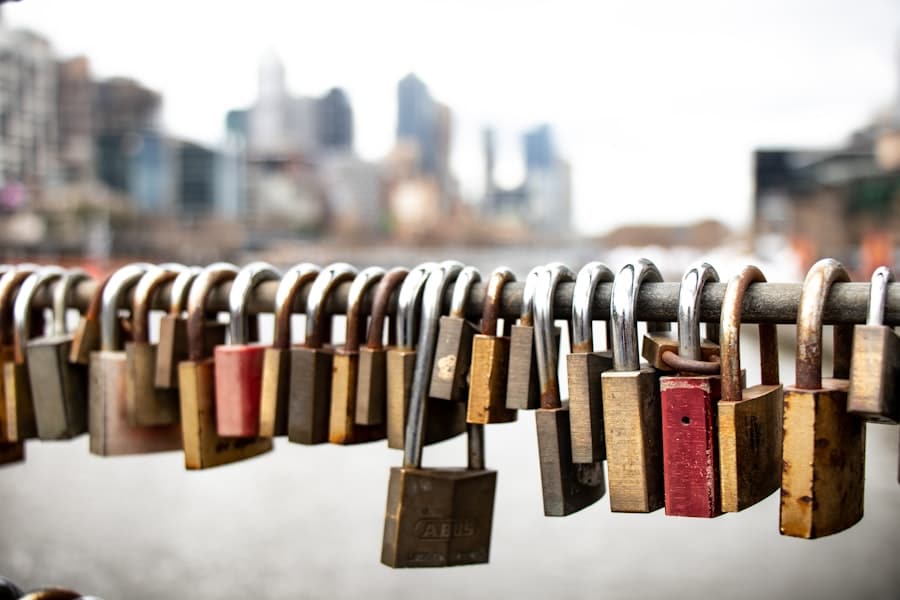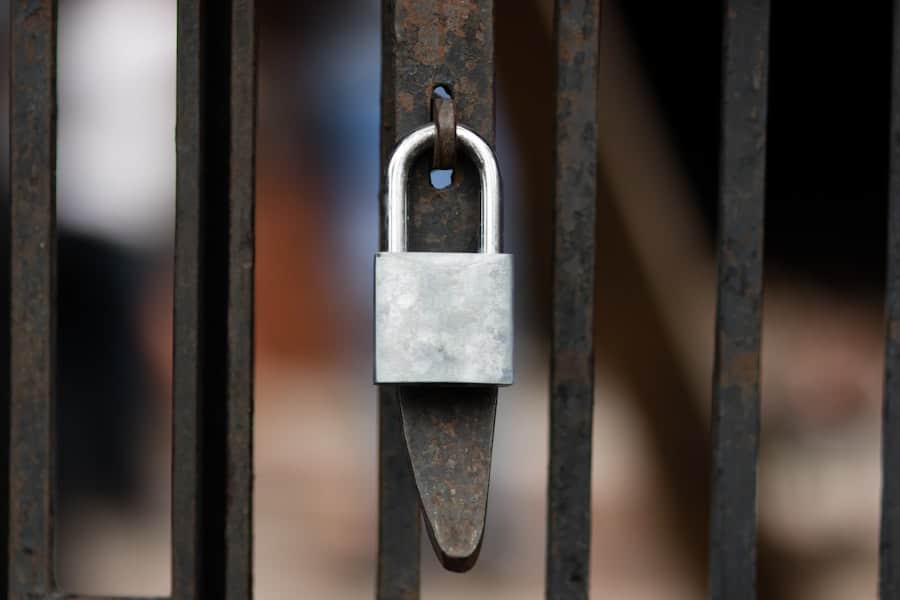Smart lock systems represent a significant evolution in home security technology, merging convenience with advanced security features. Unlike traditional locks that rely on physical keys, smart locks utilize electronic mechanisms and connectivity to provide access control. These systems can be operated via smartphones, key fobs, or even biometric data such as fingerprints.
The integration of smart technology allows homeowners to monitor and control their locks remotely, offering a level of flexibility and peace of mind that was previously unattainable. The core functionality of smart locks revolves around their ability to connect to the internet or local networks, enabling users to manage access from anywhere. Many smart locks come equipped with features such as remote locking and unlocking, temporary access codes for guests, and activity logs that track who entered or exited the home and when.
This data can be invaluable for homeowners who want to keep tabs on their property, especially when they are away. Furthermore, the ability to integrate with other smart home devices enhances the overall security ecosystem, allowing for automated routines that can bolster safety.
Key Takeaways
- Smart lock systems use advanced technology to provide convenient and secure access to your home.
- When choosing a smart lock, consider factors such as compatibility with your existing door hardware and the level of security features you need.
- Proper installation of your smart lock system is crucial for its effectiveness and security.
- Setting up user access and permissions allows you to control who can enter your home and when.
- Integrating your smart lock with other home security systems can provide a comprehensive and seamless security solution for your home.
Choosing the Right Smart Lock for Your Home
Selecting the appropriate smart lock for your home involves considering several factors, including compatibility with existing door hardware, security features, and user interface. One of the first steps is to assess whether the smart lock can fit your current door setup. Many smart locks are designed to replace standard deadbolts, while others may require additional modifications.
It is crucial to measure your door and check the specifications of potential locks to ensure a proper fit. Security features are paramount when choosing a smart lock. Look for models that offer encryption protocols, such as AES (Advanced Encryption Standard), which protects data transmitted between the lock and your devices.
Additionally, consider locks that provide two-factor authentication, which adds an extra layer of security by requiring a second form of verification before granting access.
User interface is another important aspect; a lock that is easy to operate via a mobile app or has a user-friendly keypad can significantly improve the overall experience.
Installing Your Smart Lock System
The installation process for smart locks can vary widely depending on the model and the existing door hardware. Many manufacturers provide detailed instructions and videos to guide users through the installation process. Generally, the first step involves removing the existing lock mechanism, which typically requires unscrewing a few screws.
Once the old lock is removed, the new smart lock can be installed in its place. It is essential to follow the manufacturer’s guidelines closely to ensure proper alignment and functionality. For those who may not feel comfortable with DIY installations, hiring a professional locksmith can be a wise choice.
A locksmith can ensure that the lock is installed correctly and securely, minimizing the risk of future issues. Additionally, professionals can provide insights into the best practices for maintaining your smart lock system over time. Regardless of whether you choose to install it yourself or hire a professional, ensuring that the lock is securely fitted and functioning correctly is crucial for maintaining home security.
Setting Up User Access and Permissions
One of the standout features of smart locks is their ability to manage user access and permissions effectively. Most smart lock systems allow homeowners to create multiple user profiles, each with customizable access levels. For instance, you might grant full access to family members while providing temporary codes for guests or service personnel.
This flexibility is particularly useful for managing access during events or when you have visitors staying at your home. Setting up user access typically involves using a mobile app associated with your smart lock system. Through the app, you can easily add or remove users, set expiration dates for temporary codes, and monitor access logs to see who has entered or exited your home.
Some advanced systems even allow for geofencing capabilities, where the lock automatically unlocks when it detects that an authorized user is nearby. This feature not only enhances convenience but also ensures that you never have to fumble for keys when your hands are full.
Integrating Your Smart Lock with Other Home Security Systems
The true power of smart locks often lies in their ability to integrate seamlessly with other home security systems. Many modern smart locks are designed to work in conjunction with home automation platforms such as Google Home, Amazon Alexa, or Apple HomeKit. This integration allows users to create comprehensive security routines that enhance overall safety and convenience.
For example, you can set up your smart lock to automatically engage when your home security system is armed or to send alerts if someone attempts unauthorized access. Additionally, integrating your smart lock with surveillance cameras can provide real-time monitoring of entry points, allowing you to visually confirm who is at your door before granting access. This interconnectedness not only streamlines home management but also creates a more robust security framework that can adapt to various scenarios.
Securing Your Smart Lock System Against Hacking
As with any internet-connected device, smart locks are not immune to hacking attempts. Therefore, it is essential to take proactive measures to secure your system against potential threats. One of the most effective strategies is to ensure that your Wi-Fi network is secure.
Use strong passwords and consider enabling WPA3 encryption if your router supports it. Regularly updating your router’s firmware can also help protect against vulnerabilities. In addition to securing your network, it is crucial to keep your smart lock’s firmware up-to-date.
Manufacturers often release updates that patch security vulnerabilities and improve functionality.
Furthermore, consider using unique passwords for your smart lock app and enabling two-factor authentication whenever possible.
These steps significantly reduce the risk of unauthorized access and help maintain the integrity of your home security system.
Troubleshooting and Maintenance Tips for Smart Lock Systems
Like any technology, smart locks may occasionally encounter issues that require troubleshooting. Common problems include connectivity issues, battery failures, or software glitches. If you experience connectivity problems, start by checking your Wi-Fi signal strength near the lock; weak signals can hinder communication between the lock and your mobile device.
If necessary, repositioning your router or using a Wi-Fi extender can help improve connectivity. Regular maintenance is also essential for ensuring optimal performance of your smart lock system. Periodically check the battery level if your lock operates on batteries; many models will send alerts when battery levels are low.
Additionally, cleaning the locking mechanism and ensuring that it operates smoothly can prevent mechanical issues over time. If you notice any unusual behavior or performance issues, consult the manufacturer’s troubleshooting guide or reach out to customer support for assistance.
Additional Tips for Enhancing Smart Lock Security
Beyond basic security measures, there are several additional strategies homeowners can employ to enhance their smart lock security further. One effective approach is to regularly review user access permissions and remove any profiles that are no longer needed. This practice ensures that only authorized individuals have access to your home and minimizes potential risks associated with forgotten codes or outdated permissions.
Another valuable tip is to consider using a secondary form of authentication in conjunction with your smart lock system. For instance, some users opt for biometric verification methods such as fingerprint scanning or facial recognition as an added layer of security. Additionally, educating all household members about best practices for using smart locks—such as not sharing access codes indiscriminately—can help maintain a secure environment.
Investing in a backup power source for your smart lock can also be beneficial in case of power outages or battery failures. Some models offer options for connecting an external power source temporarily if needed. Finally, staying informed about new developments in smart lock technology and security trends can help you adapt your strategies as necessary, ensuring that your home remains secure in an ever-evolving landscape of threats and innovations.
If you are looking to enhance your home security with a smart lock system, you may also be interested in learning about the best software for logo design today. This article here provides valuable insights into the top tools available for creating professional logos. By combining a secure smart lock system with a well-designed logo for your business or personal brand, you can ensure that both your physical and digital assets are protected.
FAQs
What is a smart lock system?
A smart lock system is a type of electronic lock that can be controlled and monitored remotely through a smartphone, tablet, or computer. It allows users to lock and unlock doors, grant access to others, and receive notifications of door activity.
How do you set up a secure smart lock system?
To set up a secure smart lock system, you will need to choose a high-quality smart lock from a reputable manufacturer, install it properly according to the manufacturer’s instructions, and connect it to a secure and reliable Wi-Fi network. Additionally, it’s important to regularly update the lock’s firmware and use strong, unique passwords for the associated accounts.
What are the benefits of a smart lock system?
Some benefits of a smart lock system include the convenience of remote access and control, the ability to grant temporary access to guests or service providers, and the ability to monitor door activity and receive notifications. Smart locks can also enhance home security by eliminating the need for physical keys and providing advanced encryption and authentication features.
Are smart lock systems secure?
When set up and used properly, smart lock systems can be secure. However, it’s important to choose a reputable smart lock manufacturer, follow best practices for securing the lock and associated accounts, and regularly update the lock’s firmware to address any potential security vulnerabilities.
Can smart lock systems be hacked?
Like any electronic device connected to the internet, smart lock systems can be vulnerable to hacking if not properly secured. However, choosing a high-quality smart lock from a reputable manufacturer, securing the associated accounts with strong, unique passwords, and keeping the lock’s firmware up to date can help mitigate the risk of hacking.



